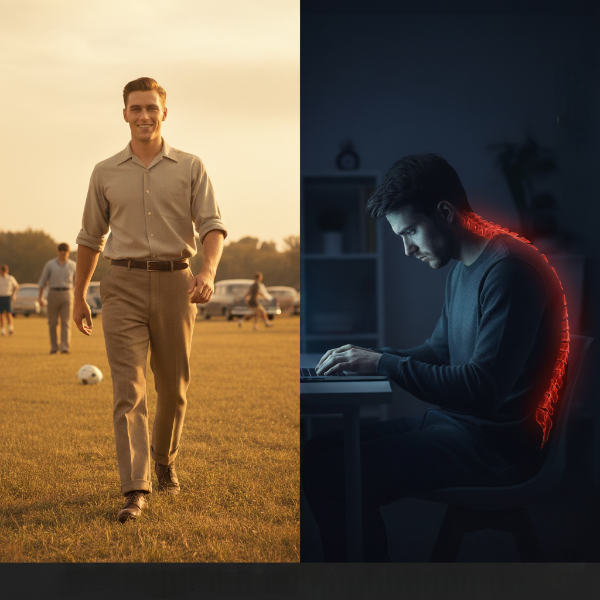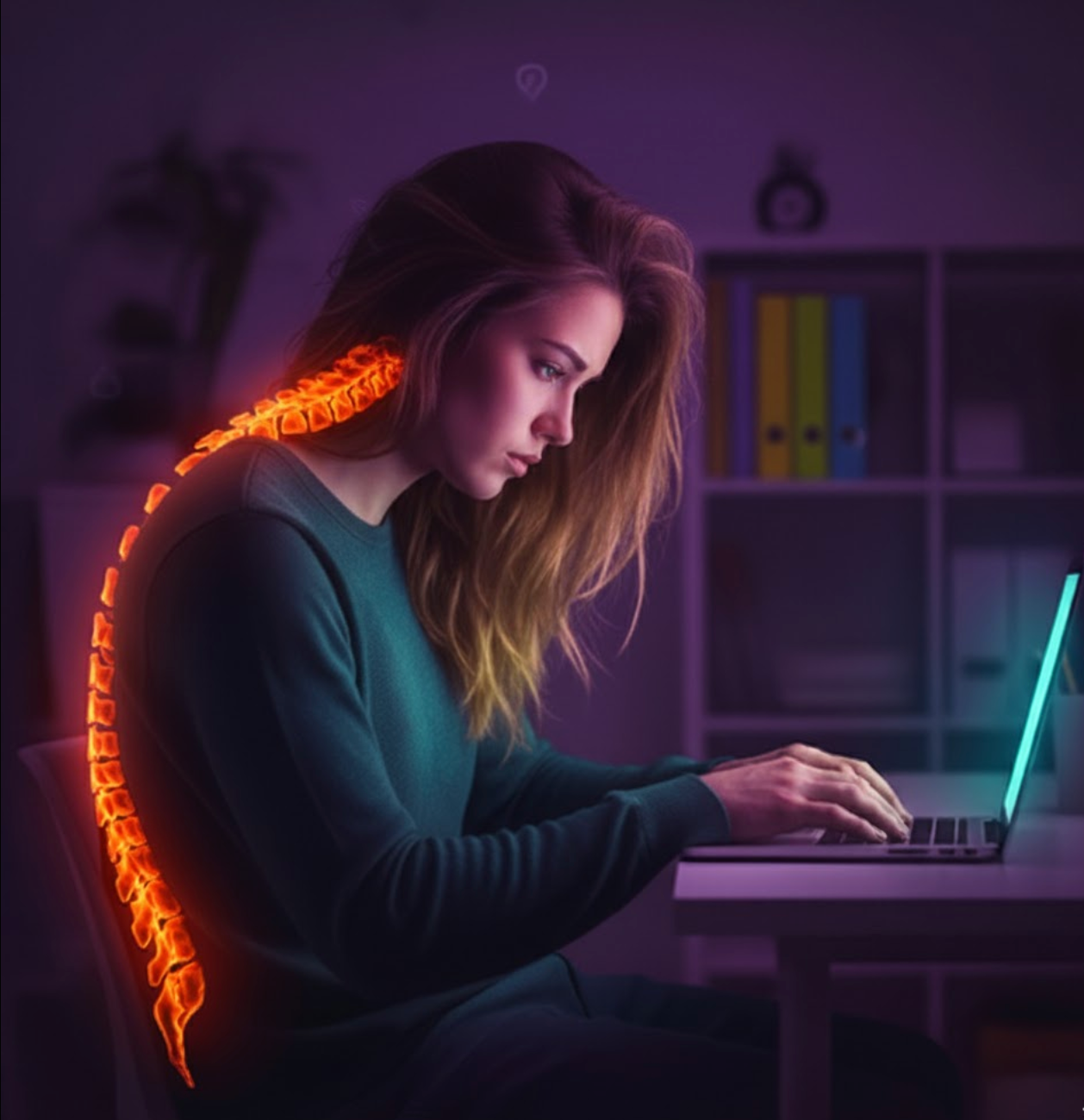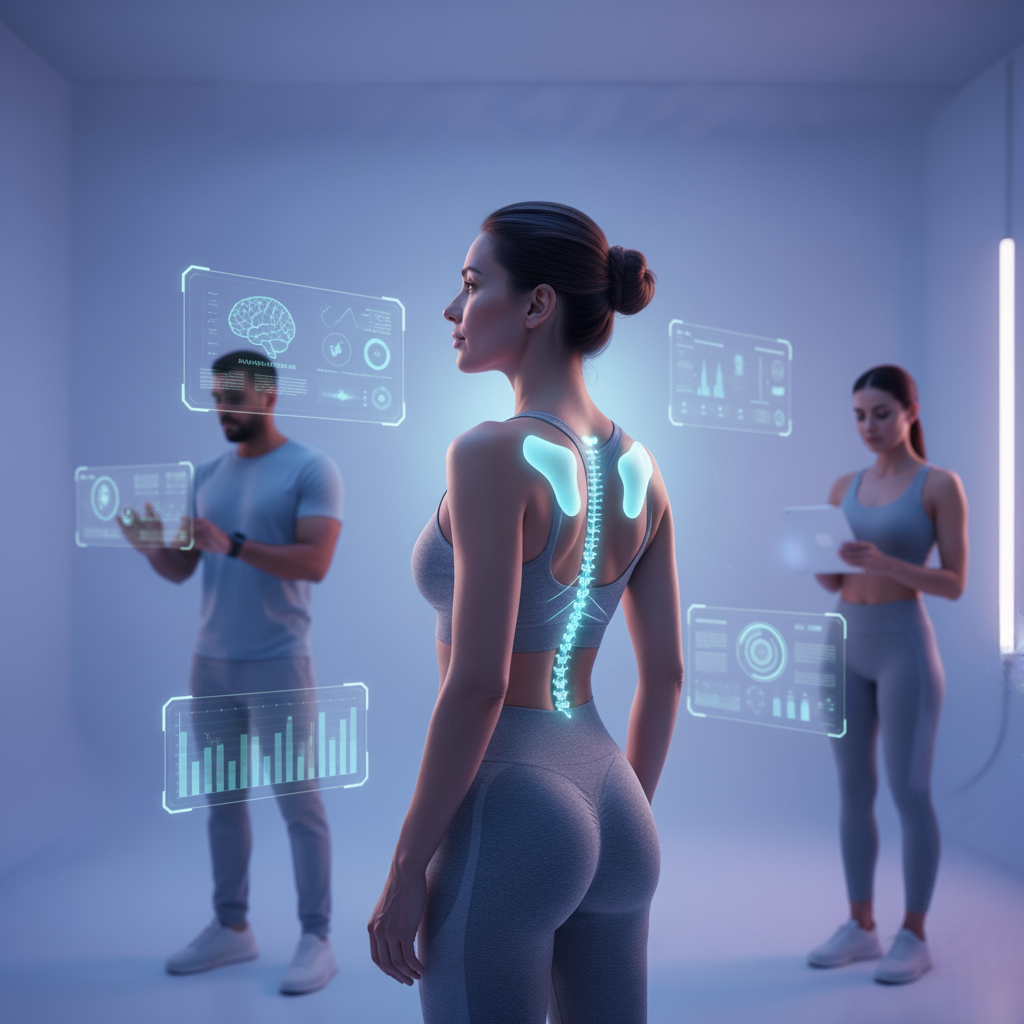Technology has made human life easier — yet it has also quietly reshaped our body mechanics.
In the 1950s, an active lifestyle supported strong spines. Today, that strength has been replaced by desk routines, tech necks, and digital hunchbacks.
So the question is — has this so-called “progress” really made us healthier, or has it reversed the evolution of our spine?

Turning Point: From the Industrial Age to the Digital Era
- The Industrial Revolution reduced our reliance on physical labor.
- After the 1980s, as computers became widespread, physical activity levels dropped dramatically.
- According to the World Health Organization, a sedentary lifestyle is one of the greatest public health crises of the 21st century.
“The human body was designed for movement; prolonged sitting has become the enemy of metabolism.”— World Health Organization
The Screen Age: A New Wave of Postural Disorders
- Smartphones, tablets, laptops…
- The average adult now spends over seven hours a day in front of screens.
- This has led to new musculoskeletal issues such as Text Neck Syndrome and Forward Head Posture.
The Journal of Physical Therapy Science:“Prolonged screen use reduces natural neck muscle activity, leading to chronic pain.”
Modern Offices, Modern Hunchbacks
- Remote work and digital offices have nearly erased ergonomic awareness.
- Poor sitting habits, static postures, and low body awareness have created a kind of postural laziness.
- According to Harvard Health Publishing, sitting for more than six hours a day weakens back and core muscles by up to 40%.

Technology’s Remedy: Smart Posture Devices and Artificial Intelligence
Ironic, but true:
The same technology that strains our spine is now learning to protect it.
- Devices like Kodgem Straight, powered by artificial intelligence, analyze spinal angles in real time.
- When slouching is detected, they send gentle vibration alerts to build posture awareness.
- These tools don’t “force” your body into position — instead, they help develop muscle memory for proper alignment.
“Technology serves health when it becomes a tool for awareness, not inactivity.”
👉 Click here to learn more about Kodgem Straight.
The Future of Health: Harmony Between Humans and Technology
- In the near future, AI-powered wearable sensors will analyze physiotherapy data and provide personalized exercise recommendations.
- Spinal health will become part of daily tracking, just like sleep or heart rate monitoring.
- Technology will no longer “compete” with the body — it will collaborate with it.
Conclusion: Our Posture Reflects Our Era
The spine is more than a column of bones — it’s the foundation of balance and the mirror of the mind.
Technology may have bent us, but with that same technology, we can learn to stand tall again.
“Through posture, a person represents not just their body — but their entire era.”
References
- Harvard Health Publishing – The Dangers of Sitting
- The Journal of Physical Therapy Science – Effect of Prolonged Sitting on Posture and Muscle Activity
- San Francisco State University, Psychology Department – Posture and Mood Study
- American Chiropractic Association – Posture & Ergonomics




Yorum yazın
Bu site hCaptcha ile korunuyor. Ayrıca bu site için hCaptcha Gizlilik Politikası ve Hizmet Şartları geçerlidir.